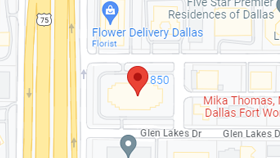Estate Planning Newsletter
Affixing a Value on an Estate
Assets owned by a person at the time of their death, whether real or personal property, is commonly referred to as the decedent’s “estate.” After the person dies, the property or proceeds from the sale of such property is usually distributed in accordance with the decedent’s will or trust or, if no such document exists, as specified by state law (“intestate succession”). In some states, a limitation is provided by the community property doctrine that property acquired during a marriage is jointly owned, therefore the survivor is automatically entitled to one half of the decedent’s property. In other states, statutes give the surviving spouse a right to a designated share of the estate, despite the provisions of any will or trust to the contrary.
Estate Taxes and Includable Property
Historically, estates have been subject to federal and possibly also state taxes. Federal taxes are assessed as a percentage of the “gross value” of estates with assets that have over a specified exempt value, less allowable deductions for funeral expenses, the decedent’s debts, etc. The applicable lifetime exemptions for federal estate and gift taxes in 2013 is $5,250,000.
Estates typically include assets such as real property, stocks and bonds, jewelry, bank accounts, vehicles, etc. The estate includes half of all jointly owned spousal property and any fractional interests in property owned by the decedent with others. It can include the value of insurance policies paid to or for the benefit of the estate, or which the decedent is considered to have an ownership interest. The estate may also include the value of property interests over which the decedent held a “general power of attorney,” i.e., the power to decide who will own or enjoy the benefits of the property. Gifts to others in which the decedent retained the right to use, possess, or receive the income from the asset gifted during his or her lifetime may also be includable in the estate.
Valuation of Estate Property
It is typically a duty of the executor or estate administrator to inventory the estate’s assets and assign a value to each asset for estate tax purposes. The assigned value must be the asset’s “fair market value” (FMV) at the date of death. The Internal Revenue Service (IRS) defines FMV as the price at which the property would change hands between a willing buyer and a willing seller, neither of which is under any compulsion to buy or sell, and both of which have reasonable knowledge of relevant facts. Sometimes the calculation is very straight forward, such as bank accounts and stocks and bonds that are freely traded on a national stock market exchange.
For other assets, the FMV may be more difficult to determine. For example:
- Less than a controlling interest in a company not traded on a national exchange, which cannot be easily sold. The lack of control over the company makes a sale even more difficult.
- A fractional (partial) ownership interest in an asset or property.
- A partnership interest, when the decedent has little control over the partnership.
- A large number of artworks by one artist, as the market price could be depressed by a contemporaneous sale of so many works.
In such situations, the IRS may allow a “discounted value” of the decedent’s interest. For example, the value of a fractional ownership interest in a company could logically be calculated by multiplying the total value of the company and its property by the percentage owned by the decedent. The IRS may allow this fractional value to be discounted, or reduced by an allowable percentage, to reflect to reflect lack of marketability and/or control. The fractional interest can thus be substantially less than it is on paper; the whole is worth more than the sum of its parts.
There is also a “special use valuation” which may be used for valuing family farms and assets of certain small businesses. In general, special use valuation allows value to be calculated based on the current use of the property (as evidenced by comparable rental value or other factors) rather than FMV. The result is usually a substantially lower value for tax purposes.
Calculating FMV – Appraisers
The IRS and estate administrators often disagree about FMV and applicable discount values. An abundance of court cases reflect the frequency of these disputes. To assign FMV and a discounted value, estates commonly employ an “appraiser.” The IRS requires that the appraiser meet the requirements of a “qualified appraiser”. A “qualified appraiser” is one who:
- Hold themselves out to the public as appraisers and perform appraisals on a regular basis.
- Are qualified to make appraisals of the particular property, such as antiques or artworks, because of special qualifications which must be set forth in the written appraisal.
- Are not donors or donees of the property or a party to the transaction whereby the decedent acquired the property, including those employed or related to any such person.
- Understands that an intentionally false overstatement may subject them to a penalty for aiding and abetting understatement of tax liability.
Alternative Valuation Date
In general, FMV for an estate asset is calculated as of the date of death of the decedent. However, if the value of the estate declines, the estate administrator may make an election to value the assets of the estate on the date six months from the date of death; this is referred to as the “alternate valuation date”. Once the alternate valuation date is elected, it applies to all assets in the estate for the purpose of computing estate tax liability. One allowable exception to the use of the alternate valuation date is for property that is sold, or otherwise disposed of within six months of the date of death, which is valued as of the date it was actually sold or disposed of.
© 2025 NextClient.com, Inc. All rights reserved.


